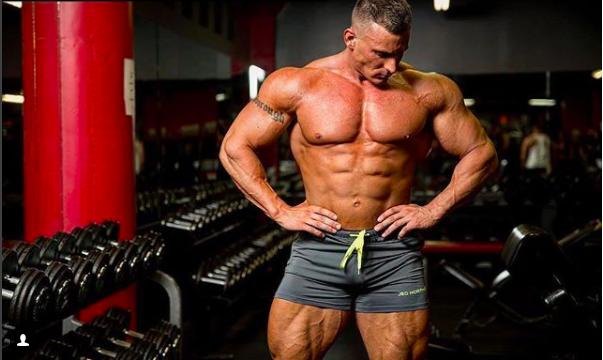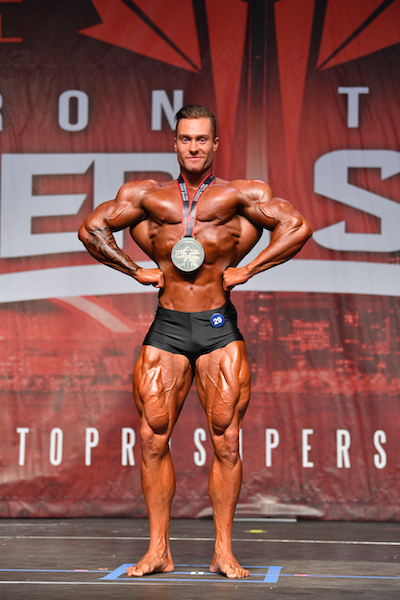Welcoming the CPA

In 2018, bodybuilding athletes from all divisions will be introduced to the inaugural Canadian Physique Alliance season. Competitors will step onto CPA stages that may eventually lead to them being granted IFBB Pro status. Not only will this two-tier system allow a faster track to reach pro-qualifying shows, but there will be more pro qualifiers on home soil with the CPA. As if that weren’t enough of a kick start, all competitors at regional shows in 2018 automatically qualify to the 2018 CPA pro qualifiers.
How can this be? It seems far too good to be true for competitors who are making a run at becoming a pro in the most dominant and prominent professional bodybuilding league in the world, right? There are no strings attached, and all indications point to the 2018 CPA competition reaching extraordinary levels in talent and opportunities. These changes are feeding the motivation of Canadian competitors.
For men’s open bodybuilding competitor and prep coach Brent O’Reilly, the change of the Canadian bodybuilding landscape is a source of inspiration in itself. At 44 years old, O’Reilly welcomes the shift to a two-tier system. O’Reilly has been a competitor for over 20 years and has qualified for multiple national-level shows. He now owns a gym in Prescott, Ontario, and is responsible for putting several competitors onstage in Ontario. He describes himself as “semi-retired” from his competitive bodybuilding career.
“People are going to save a lot of money, they’re going to have more than one opportunity to turn pro, and they’re going to get more experience onstage beside people in better shape with better quality of muscle,” says O’Reilly. “It’s going to inspire people that thought there were too many steps.”
One of the greatest selling points is the additional pro-qualifying events in Canada with the CPA. There are three events right in the middle of the country in Toronto and another in a Canadian bodybuilding hotbed on the west coast in Vancouver.
“Most people would’ve waited, if you live in the east, for Nationals to come back to the east. Not just that, but if you’re so inclined, you could try three or four times to turn pro now,” adds O’Reilly. “It keeps them more motivated to get to the next one.”
When it came to CBBF Nationals competitors in 2017, a lot of the competitors that were class winners but didn’t receive their pro card chose to go international and compete off home soil. They would have to take a trip to the United States to compete in the IFBB North Americans or overseas to an Amateur Olympia competition. Such an expensive addition to a contest is now no longer necessary if you’re pro-ready.
“If they’re thinking they want to be a pro by the end of the year, they have multiple chances in a reasonable span of time to pro. They don’t have to go to Pennsylvania and compete with Americans and Mexicans. This way they have a chance just to go against their own countrymen and women, and then move forward from there,” reasons O’Reilly.
O’Reilly doesn’t hold back when it comes to the timing of the change to a two-tier system. It’s no secret that many pro-ready physiques on CBBF National stages have been held back as amateurs due to the three-tier systems, especially in Ontario and western provinces. O’Reilly notes that Ontario’s top callouts at Provincials have been generally comparable with the top callouts at Nationals in terms of quality.

“I think they should’ve done this sooner. There’s lots of quality competitors in all divisions that never got their chance because they maybe didn’t win their overall, but the person that won their overall never will compete again because it took them those extra years to achieve this due to the three-tier system,” says O’Reilly.
With the elimination of the middle tier, he believes we will observe a higher amount of talent on IFBB Pro stages. Any athlete who has competed in the Maritime provinces knows very well that competing in a regional show and then doing provincials could be seen as a bit redundant. For the most part, you’ll see only familiar faces, and if you were to do provincials in the same year as your regional show, there won’t be much difference in the overall level of quality at those shows. This is a fast track to IFBB Pro stages for quality (pro-calibre) competitors.
“Let’s face it. We’re on par with anybody. When we get onstage, we should be as good as anybody else,” O’Reilly says regarding Canadians on IFBB Pro stages.
O’Reilly also notes that many bodybuilders he grew up competing against, as well as himself, should be inspired by this change and the direction of Canadian Bodybuilding with the CPA.
“If I thought I wanted to go back and try to get my pro card and had to do a regional show, then the Provincials again and then have one chance at a pro qualifier for a total of one pro-card against quality competitors that are all in top-quality shape, I wouldn’t do it. I’m 44. But, at 44, thinking I can go step right onstage, go right to do pro qualifiers and have three cracks at it—four if I want to travel—especially if you’re already in shape from the regional … it’s a little bit tempting,” confesses O’Reilly.
Asked about the fast track potentially taking away from the prestige of the Pro card, he is quick to nullify that argument.
“You can say that, but the people that aren’t qualified aren’t going to do well anyways. If you’re one of the best in your category and you’re one of the top few in your country, it shouldn’t make a difference to you,” says O’Reilly. “You should be one that takes the people who aren’t quite ready and give them a little help, not bash them down. That competition makes us all better.”
The message rings true with another Canadian competitive bodybuilder, Andrew Melling. Melling just wrapped up his 2017 competitive season with a third-place finish at the Ben Weider Legacy Cup. The 34-year-old Melling showed marked improvement in physique and results from his first crack at a pro-qualifying stage this year at CBBF Nationals before hitting a podium position at the Weider. His motivation is running high going into 2018 with the new shows for which his placing will qualify him.

“It is definitely an exciting time for amateur bodybuilding in Canada,” says Melling. He adds that athletes who feel ready for a pro qualifier have fewer “hoops to jump through to get to a pro-qualifying stage.”
Melling doesn’t think it just helps athletes ready to stand on the pro-qualifying stages, though. According to him, Canada’s number of competitors is growing at an already exponential rate, and this shift welcomes first-time competitors to register.
“The two-tier system, in combination with more pro-qualifying events, will allow Canada to produce more IFBB Pro athletes,” says Melling. “These athletes will bring more attention to our community in Canada, which I believe will inspire more Canadians to compete,” he concludes.
There are a couple of important facts when it comes to the changes the CPA will usher in next year. For one, there are more opportunities to turn pro. Secondly, there’s now less resistance to turn pro. Of course, the pro ranks are undoubtedly where the best of the best mix it up onstage. Melling thinks this could make a huge impact on the overall popularity of bodybuilding in Canada.
“With the three-tier system, athletes had to have placed top five at their regional, and then again top five at their provincial show to be qualified for Canadian Nationals, which was our only pro-qualifying event. Without overall titles, provincial and national qualifications also expire, and professional status was only given to overall winners of Canadian Nationals,” explains Melling.
One of the biggest disadvantages to this qualification system was that the provincial and national shows would only happen once annually. This of course isn’t ideal if a competitor feels ready for a Pro card or is simply trying to gain valuable experience on a stage of such magnitude.

“Scheduling would often cause the journey to a pro-qualifying event to be spread out over two or more years, especially if the athlete wanted to make physique improvements between shows,” states Melling.
Melling brings up the dynamic duo Regan Grimes and Chris Bumstead, both of them are proudly Canadian but had to look outside the “true north” to achieve IFBB Pro status.
“These guys have brought more attention to the Canadian bodybuilding community than anyone else, ever. Both, however, for lack of opportunity, received their professional status outside of Canada,” says Melling.
One very common theme with the nationally qualified athletes in Canada is that the three-tier system produced an exceptional quality of athletes at the top of the heap in Canada. Melling is in complete agreement with that fact. However, Melling also says that this might’ve been the best timing possible to switch to the two-tier program.
“We have provincial and national athletes who would be competitive on pro stages. I think it’s the perfect time to show the world who we are!”
For more about the CPA, check out our article here, explaining all about the new and improved organization!

